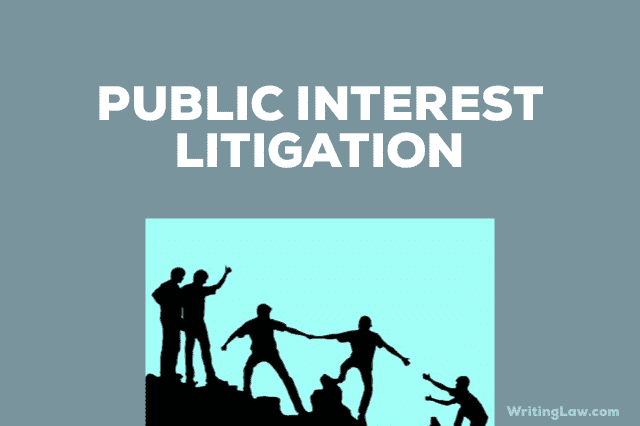
Justice Krishna Iyer and Justice PN Bhagwati developed the concept of PIL which stands for Public Interest Litigation. This concept has been taken from the United States of America. Upendra Bakshi has recognized it as Social Interest Litigation.
Public Interest Litigation
Rule of Locus Standi says, “a person whose right is violated will approach the court.” But in PIL this is not the case. If the victim is unable to approach the court due to illiteracy, is economically backwards or due to any other reason, then any person on behalf of such a victim may approach the court for the protection of his fundamental rights. This is called Public Interest Litigation (PIL).
Cases Related to PIL
1. People Union for Democratic Rights vs Union of India
At the time of the Asian Games, the workers were working in inhuman conditions and were getting less remuneration according to the Minimum Wages Act, 1948. The word “bonded labour” was introduced.
2. Bandhua Mukti Morcha vs Union of India
In Faridkot, Haryana, there was a mine in which there were bonded labourers working in inhuman conditions and were not getting wages as prescribed in the Minimum Wages Act. Supreme Court held that if a labourer doesn’t get minimum wage, then it be considered as “forced labour.”
3. MC Mehta vs Union of India
Some guidelines were issued:-
I. For PIL, a person can even post a letter in the name of a judge of the Supreme Court without attaching an affidavit.
II. The Supreme Court has the power to grant compensation to the victim in furtherance of PIL.
III. The Supreme Court has the power to appoint a commission for investigating matters related to the violation of fundamental rights.
What is Epistolary Jurisdiction: When PIL is treated through a postcard, letter, newspaper, etc. by the Supreme Court, then it is epistolary jurisdiction. Epistolary means “in the form of letters.”
How to File a PIL
A PIL can be filed by anyone from the public related to any matter which is of public interest and affects a group of people, and also requires redressal. A PIL can be filed if there is a violation of fundamental rights, basic human rights, or to compel an authority to perform their public duty. Both the High Court and the Hon’ble Supreme Court of India have the power to entertain Public Interest Litigation petitions. This power is granted under Article 32 and Article 226 of the Indian Constitution.
PIL can be filed against whom?
A PIL can be filed against the State Government, Central Government, Municipal Corporations, public offices, Government of Delhi, Pollution Control Board and not any private individual or a private party.
Procedure for filing of a Writ Petition/PIL:
- Approach a lawyer or a law firm/office to represent you in court.
- Collect all the necessary documents which are relevant for your case, along with your identity and residence proof.
- Inform the lawyer about all the aggrieved parties approaching the court and all the relevant details about them.
- Then your lawyer will be drafting the petition and will file it in court along with court fees.
- After this, the PIL proceedings will have the same procedure as any other writ petition. The judge has the authority to appoint any commissioner to inspect the allegations.
- At last, after completion of the legal stages like filing of replies, rejoinders, the final decision of the case will be given by the judge.
How PIL Is Related to RTI Act, 2005
The PIL came to resolve the concept of Locus Standi, which used to allow only the victim to approach the court. After coming of PIL, anyone can approach the court on behalf of the person who is unable to seek relief due to economic conditions or who is not legally aware. The same is with RTI. Its purpose is also to make the authorities answerable for their actions. Both PIL and RTI seek transparency, accountability and redressal. Therefore, we can say that both are kind of related.
- Article 334A of the Constitution of India - 14th April 2024
- Article 332A of the Constitution of India - 14th April 2024
- Article 330A of the Constitution of India - 14th April 2024







